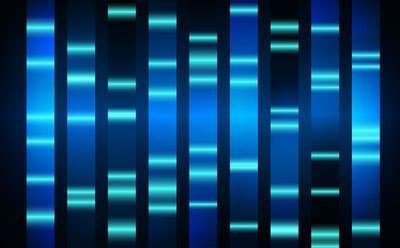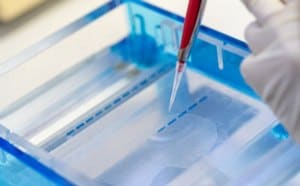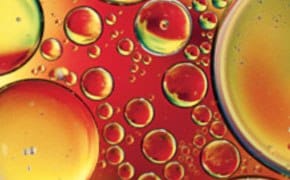Nucleic Acid Gel Electrophoresis

Nucleic acid gel electrophoresis is a molecular biology technique for the separation, identification, and purification of DNA and RNA fragments based on size and charge. In this technique, DNA and RNA molecules are separated by applying an electric field to move negatively charged nucleic acids through an agarose or polyacrylamide gel matrix.
Featured Categories
Optimize DNA and RNA analysis with our stains, gels, and labeling reagents for precise quantitation.
Learn about high-purity biological buffers in various formulations and packaging formats to get superior solution stability and pH control for your bioprocess workflow applications.
Biological detergents and surfactants, including REACH-compliant biodegradable alternatives, are available for cell lysis, DNA/RNA electrophoresis, Western blotting, transfection, and many other life science research applications.
Milli-Q® systems offer innovative water purification technologies engineered to support lab research needs, sustainability goals, and other major requirements.
The gel matrix acts as a sieve, allowing shorter molecules to run more quickly through the pores of the gel than longer molecules.
- Agarose gels are more commonly used for DNA and RNA electrophoresis and can resolve DNA fragments ranging from 50 base pairs (50 bp) to 50,000 bp using standard electrophoretic techniques.
- Polyacrylamide gels have a smaller range of separation and can resolve fragments of DNA less than ~500 bp with very high resolution.
- Both agarose and polyacrylamide gels can also be used in electrophoretic mobility shift assays (EMSA) to characterize protein-nucleic acid interactions.
Following electrophoresis, DNA and RNA molecules can be visualized via the use of stains or UV light, extracted and purified from the gel, or transferred for blotting. These methods are common preparative techniques in cloning, PCR, mass spectrometry, next generation sequencing (NGS), and Northern and Southern blot applications and workflows.
Visit our document search for data sheets, certificates and technical documentation.
Related Articles
- Ethidium bromide is a well-known and widely used fluorescent dye in biotechnology research.
- An ultrafiltration cartridge can be placed at the outlet of a water purification system to deliver nuclease-free ultrapure water.
- Nuclease-free water (or PCR water) is needed in molecular biology to avoid sample degradation during PCR, sequencing, etc. Ultrafiltration provides a quicker, safer, and more sustainable alternative to DEPC treatment when preparing RNase-free and DNase-free water.
- Learn how water impurities can affect pH. Water quality defined as pure water or Type 2 water is recommended to prepare buffer solutions or measure pH.
- Explore the essential role of water in next-generation sequencing for accurate and efficient genomic analysis
- See All (9)
Related Protocols
- An introduction to Nucleric Acid electrophoresis and standard protocols for Agarose gel electrophoresis for DNA, RNA & polyacrylamide gel electrophoresis for DNA.
- Precast Agarose Gels for RNA Electrophoresis are suitable for separating RNA sizes from 0.25 to 10 kb.
- The easiest way to use the Blocking Reagent is with the Roche DIG Wash and Block Buffer Set, a ready-to-use set of stock solutions.
- These gels are suitable for separating nucleic acids, giving sharp DNA bands and low background fluorescence.
- Cloning process, joining linear DNA into a vector, is crucial for biotechnological experiments, enabling DNA fragment recombinant technology.
- See All (9)
Find More Articles and Protocols
How Can We Help
In case of any questions, please submit a customer support request
or talk to our customer service team:
Email custserv@sial.com
or call +1 (800) 244-1173
Additional Support
- Chromatogram Search
Use the Chromatogram Search to identify unknown compounds in your sample.
- Calculators & Apps
Web Toolbox - science research tools and resources for analytical chemistry, life science, chemical synthesis and materials science.
- Customer Support Request
Customer support including help with orders, products, accounts, and website technical issues.
- FAQ
Explore our Frequently Asked Questions for answers to commonly asked questions about our products and services.
To continue reading please sign in or create an account.
Don't Have An Account?



